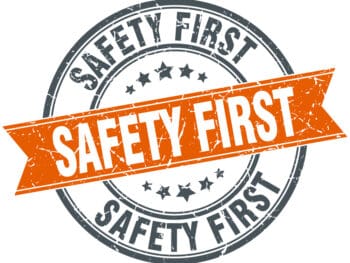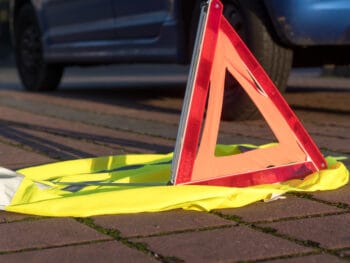
Click Link to Access Free PDF Download
“4-Step Sequence For Effective Employee Screening, Hiring, & Placement”
Trends
Injury Frequency. While many injuries occur to newly hired workers, some industries were noteworthy for other spikes in injury frequency
- Healthcare – 3 – 4 years after the hire date
- Clerical/professional – more than 10 years after the hiring date
Also, in healthcare, 38% of injuries happen during the first year on the job, whether the worker is new to the organization OR new to the industry.
Danger Zone Times. A drop in blood sugar levels is speculated as a reason for the increase in injuries at 10 a.m. in several industries. Additional times of frequency spikes include:
- Service Hospitality: 9 p.m. saw a spike in the most expensive injuries
- Construction/natural resources: 9 – 11 a.m. and 1 – 3 p.m.
- Clerical/professional: 8 – 11 a.m., with a significant spike at 2:00
Vulnerable Body Parts. The lower back is the most commonly injured body part in both the professional/clerical and construction/natural resources fields. It’s also the most expensive location for injuries in construction/natural resources. Other commonly injured and/or expensive body parts injured include
- Service/hospitality: fingers, hands and lower back are most commonly injured. Lacerations, contusions, strains, sprains, and burns are the most expensive injuries.
- Construction/natural resources: lower back, knee, foot, lower leg, and fingers are the most expensive body parts injured.
- Healthcare: lower back, shoulder, knee, wrist, and ankle are the most expensive. Strains, strikes (needlesticks) and strains (lifting/carrying) are the most frequent causes of injuries, while animals are number 8 on the list of causes, due to home health care incidents.
- Clerical/professional: lower back, knee, fingers, shoulder and wrist are the most commonly injured body parts. The most expensive injury types are contusions, strains, sprains, fractures and The most frequent causes of injures are strains from lifting, falls from ice/snow, falls on the same level, repetitive motion, and motor vehicle incidents.
Lessons and Strategies
While the reasons for the trends are not all known, employers/payers can use the data to focus their injury prevention efforts.
- Train/retrain. All four industries reported a higher frequency of injuries among newer workers. But in at least two, there were frequency spikes years after the hiring date. Employers should provide thorough training for all new hires, including temporary workers. For example, 30% of injuries occur during the first year of employment in the clerical/professional industry. The top cause of injuries are strains from lifting. Proper lifting techniques should be a mainstay of the training. Knowing there is a spike in injury frequency more than 10 years after hiring, the training should be repeated on an ongoing basis, such as annually.
- Encourage movement. In three of the 4 industries, there is a spike in injuries at 10 a.m. In clerical/professional organizations, most injuries occur between 8 and 11 a.m., with a significant spike at 2:00. Knowing this, employers should schedule activities that will get workers moving.
- Walking meetings, for example, are a great way to get the body and brain going.
- Getting fresh air is another good remedy, so scheduling short breaks and encouraging workers to step outside can be effective.
- Stretching properly for even a couple of minutes can have a positive impact.
- Group activities require social interaction, which revs up the body and mind.
- Provide protection. Lower back injuries are rampant among all four industries. Provide protection for employee with the following:
- Employers in the healthcare industry should seriously consider devices to help lift and move patients.
- Construction companies can take simple steps, such as locating cement and other heavy materials close to where workers will use them, to prevent unnecessary handling. Padding for workers’ shoulders should be provided when they will be carrying heavy lumber.
- Clerical/professional workers might have less risk of sustaining a low back injury with ergonomically appropriate chairs and workstations. This need not be expensive. Having an ergonomist show employees a proper workstation set-up and providing instructions on new chairs can go a long way.
- Lacerations caused by non-powered tools and broken glass account for the most frequent and expensive injuries in the service/hospitality industry. Employers should be especially vigilant about training workers to use tools and ensuring broken glass is cleaned up quickly and thoroughly.
- Modify schedules/tasks. Knowing that more injuries are prone to occur during certain times can help employers determine when to require certain tasks be undertaken. The riskiest work should be avoided during times of high injury frequency, such as 10 a.m. for many industries, as well as early afternoon in construction/natural resources and clerical/professional, and 9 p.m. for service/hospitality
Conclusion
Insight into when and how more workplace injuries occur can help employers/payers tailor their prevention strategies. Data from Pinnacol and other sources can be invaluable in protecting workers and reducing workers’ compensation costs.

Contact: mstack@reduceyourworkerscomp.com.
Workers’ Comp Roundup Blog: https://blog.reduceyourworkerscomp.com/
©2018 Amaxx LLC. All rights reserved under International Copyright Law.
Do not use this information without independent verification. All state laws vary. You should consult with your insurance broker, attorney, or qualified professional.










